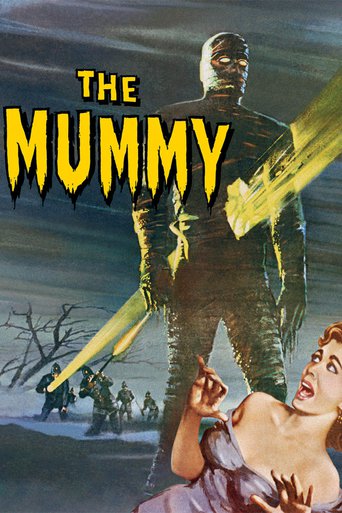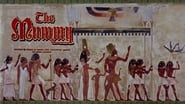simeon_flake
Hammer's first take on the Mummy and probably their best stab at it--or for me, anyway--perhaps the only one worth watching. Lee and Cushing are back as the 2 great stars, and Yvonne Furneaux makes for a very lovely female lead. This Mummy takes more inspiration from the 2nd wave of the old Universal chestnuts, harking back to Prince Kharis rather than Karloff's Imhotep. As far as the old Universal cycle goes, I assume most horror fans agree that the "Karloff" version is the superior one, but the films with Kharis--mostly the ones with Lon Chaney Jr., are a lot of fun as well. At any rate, the Hammer version sticks to pretty much the same formula--not many deviations aside from the obvious technicolor & the fact that Lee as the mummy, can see with both eyes. Reportedly, after this role, Lee stated that he had had enough of playing mute, heavily bandaged monsters, but his take on the creature is excellent nonetheless. Just a subtle expression or a movement with the eyes can display some great emotion--for those actors with obvious talent.
Uriah43
This movie begins with an archaeological expedition headed by a man named "Stephen Banning" (Felix Aylmer) who is looking for the tomb of an ancient Egyptian princess by the name of "Ananka" (played by Yvonne Furneaux). To his great delight they end up finding it and while his associate, "Joseph Whimple" (Raymond Huntley) leaves the tomb to tell Stephen's son "John Banning" (Peter Cushing) the news Stephen continues searching for other items of interest. It's during this search that he finds an ancient manuscript known as "the Scroll of Life" and upon reading it aloud wakes up the mummified body of the high-priest of Karnak named "Kharis" (Christopher Lee) who has been placed there to guard the sanctity of the tomb. Kharis immediately attacks Stephen but is stopped by an Egyptian devotee of Karnak named "Mehemet Bey" (George Pastell) who has appeared out of nowhere and immediately orders Kharis back into his hidden chamber. Needless to say, Stephen is severely traumatized by these events and suffers from a stroke which leaves him in a comatose state as a result. The film then fast-forwards to three years later in England with the sarcophagus of Ananka being put on display in the British Museum of London and Stephen being confined to a nursing home due to the effects of the stroke. What none of the archaeologists know is that Mehemet Bey has recently arrived in London with a crate containing the mummy of Kharis with the intention of killing all three of the people responsible for desecrating the tomb of Ananka. Now rather than reveal any more I will just say that this film is not a remake of the movie produced in 1932 known as "The Mummy". Instead, this movie incorporates bits and pieces from the original 1932 movie and combines scenes from several sequels that followed it ("The Mummy's Hand", "The Mummy's Tomb" and "The Mummy's Ghost"). As a result, there really is no comparison between the 1932 film and this particular picture. At least I don't think so. Be that as it may, this movie is certainly entertaining enough and I have rated it accordingly. Slightly above average.
Leofwine_draca
Here's another colourful classic from those chaps at Hammer, made at the peak of their popularity in the late '50s. From here on they were on their way down, forced into lower and lower budgets in the '60s (forced to shoot two lots of films back-to-back in 1965 in order to utilise sets), remaking the same types of film again and again, and desperately trying to cling on to the last remaining viewers in the early '70s with added gore and sex. THE MUMMY is a faithful retelling of previous entries in the genre, only this time with different names and lots of colour. Hammer made their mummy (played by Christopher Lee) a frightening, towering figure of evil, and scenes of it striding across the countryside, caked in mud and slime after rising from a bog, manage to be very frightening indeed.It's also a surprisingly tame film, at least in the version I saw, tame enough to get a PG rating in the UK. The only grisly moment comes when Lee gets his tongue cut out in flashback, but MARK OF THE DEVIL this isn't! We witness the event from behind Lee's head instead. Supposedly, racier/gorier versions were shot for foreign markets, and I'd love to see a print of one of these one day - it would certainly make interesting viewing.Anyway, in the tradition of their previous hits THE CURSE OF FRANKENSTEIN and Dracula, this film has a great score from James Bernard, good photography and lots of nice scenery/sets and costumes. Full use is made of the colour film available to Hammer, making it a very nice picture to look at. My only real complaint with this film would be the running time, which feels very short (although it isn't really). A fair quarter of an hour is taken up with a lengthy flashback scene explaining how Lee came to be buried in the princess' tomb. Therefore the film feels very short, and there's not a lot of opportunity to build up atmosphere. Instead what we get is a surprising amount of action and lots of shots of Lee coming out of his tomb and prowling the countryside while menacing music plays on. What more could you want from Hammer? Of course the third pairing of Cushing and Lee is the factor that really makes this film unmissable (just about any film starring the pair is a classic, with perhaps the exceptions of THE GORGON, I, MONSTER, and NOTHING BUT THE NIGHT). Lee plays the monster once more, using only his eyes to convey loneliness and sadness as the titular character. Indeed he puts in a sympathetic performance, yet still manages to be frightening when we first meet up with him. Cushing, on the other hand, does what he does best, i.e. be the hero and fight evil. He does get a couple of excellent fight scenes with Lee set in a library, where he rolls over desks in a display of sudden agility and even spears the mummy with a poker (an idea of his own). Cushing's character is typically noble and intelligent, yet not as interesting as his Doctor Frankenstein or Van Helsing - in fact, John Banning is quite a bland role, but Cushing breathes life into it with his typical skill and makes all of the scenes in which he appears professional and worthy.An excellent supporting cast flesh out the ranks, including Yvonne Furneaux as the glamorous damsel in distress (given shamefully little to do, though, aside from be carried by the mummy). Felix Aylmer is the fussy, selfish elder Banning, who probably deserves the strangling that he gets, when the mummy breaks through the bars of his padded cell and attacks him (again a great moment). Further down the cast list, Michael Ripper puts in a comic bit part as a drunk poacher who can't believe his eyes, George Pastell is suitably evil as a suspicious foreigner, and old-time performers like George Woodbridge (a staple for Hammer) lend solid support.The special effects are limited, but there are some excellent scenes involving the mummy getting shot where huge holes are blown in his chest - very convincing too. The ending sees the mummy taking Banning's wife and walking back into the bog, before putting her down and getting gunned to death by surrounding policemen (KING KONG anybody?), which manages to be quite tragic and fitting. The Egyptian scenes and flashbacks look convincingly done on a low budget, and the mummy kills a string of people to keep the horror content flowing. In all, this is another well-made classic from Hammer, with all the correct elements, and the best mummy movie I've seen so far.
l_rawjalaurence
Produced during the halcyon days of Hammer Films, with the customary duo of Peter Cushing and Christopher Lee in leading roles, Terence Fisher's film offers an interesting perspective on the story's colonial elements. By uncovering the untouched tomb of Princess Ananka Stephen Banning (Felix Aylmer) has in a sense desecrated the past and deserves to be punished for it. In a sense the Egyptian Mehemet Bey (George Pastell( has a point: what right do British archaeologists have to come to Egypt and raid a tomb, just so that they can take the artifacts back to their country of origin on the pretext of wanting to learn something about the past? Mehemet has a dialog with Stephen's son John (Peter Cushing) on this very subject; John tries to justify his work, but cannot really understand the depth of Mehemet's religious belief.Having said that, Terence Fisher's film is not without its strong colonialist elements. In the studio-bound sequences at the beginning, ostensibly set in Egypt, the locals are represented as slaves and/or coolies simply serving the interests of Banning, his associate Joseph Whemple (Raymond Huntley) and John. They carry the coffins, lay the explosives to blow up the tombs, and carry out the Europeans' wishes without question. There is also the issue of mimicking: Lee has a largely silent role as the Egyptian mummy, save for a flashback scene set in the past where his enduring love for Princess Ananka (Yvonne Furneaux) is revealed.Shot in lurid color, this version of THE MUMMY emphasizes the story's Gothic elements. There are numerous sequences set in the wilderness outside Banning's house, where Mehemet and the Mummy come in pursuit of their victims. The final sequence is straight out of James Whale's FRANKENSTEIN, as the Mummy carries off John's wife Isobel (Furneaux) who bears more than a passing resemblance to the Princess. And there are also two swamp sequences that suggest quite literally that the protagonists are consigned to oblivion - a dark and sludge-like state that houses the living dead.As with all Hammer films, the story unfolds at a brisk pace, with plenty of time allowed for cameos from many of the studio's favorite repertory of performers - Michael Ripper, George Woodbridge. The stately home that served as the studio's offices also serves as the main setting for much of the drama. Little attempt is made to disguise the staginess of the film - especially at the beginning - but there are more than a few shocks to compensate.











